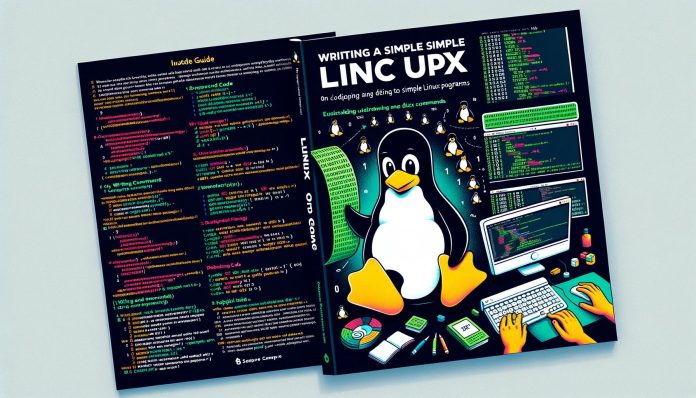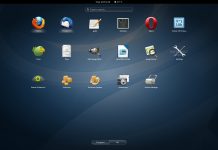Introduction
When I first ventured into the world of Linux, I was overwhelmed by its flexibility and power. As a beginner, I sought simple ways to create and understand Linux programs. In this guide, I will share my journey and the essential steps I took to write simple Linux programs. Whether you’re a complete novice or someone with basic programming knowledge, this article will help you navigate the Linux programming landscape.
Understanding the Linux Environment
Before diving into programming, it’s crucial to understand the Linux environment. Linux is an open-source operating system that allows users to interact with the system through a command-line interface (CLI). Familiarizing myself with the terminal was one of the first steps I took. Here are some key commands I found helpful:
ls: Lists files and directories in the current directory.cd: Changes the current directory.mkdir: Creates a new directory.touch: Creates a new empty file.
By mastering these basic commands, I felt more comfortable navigating the Linux filesystem.
Setting Up Your Development Environment
To write Linux programs, I needed the right tools. Here are some essential components I recommend setting up:
1. Text Editor
Choosing a text editor is crucial. I experimented with several options before settling on Visual Studio Code for its user-friendly interface and extensive extension support. However, if you prefer a lightweight editor, I recommend nano or vim.
2. Compiler
Depending on the programming language you choose, you will need a compiler. For C programming, I installed GCC (GNU Compiler Collection) by running:
sudo apt install build-essentialFor Python, the interpreter typically comes pre-installed on most Linux distributions. You can check your Python version with:
python3 --version3. Version Control
I also found it beneficial to use Git for version control. It helps track changes and collaborate with others. To install Git, I ran:
sudo apt install gitWriting Your First Linux Program
Now that my environment is set up, let’s write a simple Linux program. I’ll start with a classic “Hello, World!” example in both C and Python.
Hello World in C
- Open your text editor and create a new file named
hello.c. - Write the following code:
#include <stdio.h>
int main() {
printf("Hello, World!\n");
return 0;
}- Save the file and compile it using GCC:
gcc hello.c -o hello- Run the program:
./helloYou should see “Hello, World!” printed in the terminal.
Hello World in Python
- Create a new file called
hello.py. - Write the following code:
print("Hello, World!")- Save the file and execute it:
python3 hello.pyAgain, “Hello, World!” will be displayed.
Understanding the Program Structure
In both examples, I learned that every program has a structure. For C, the #include <stdio.h> line is a preprocessor directive that tells the compiler to include the standard input-output library, necessary for using the printf function. In Python, the simplicity of the syntax made it easy for me to write and understand programs.
Expanding Your Knowledge: Basic Concepts
As I became more comfortable with writing programs, I explored several fundamental concepts that are essential for programming in Linux.
Variables and Data Types
Understanding variables and data types was essential for writing functional programs. In C, I declared variables like this:
int age = 25;
float height = 5.9;In Python, I could simply write:
age = 25
height = 5.9Control Structures
Control structures like loops and conditionals allow programs to make decisions. Here’s a simple example of a conditional statement in C:
if (age >= 18) {
printf("You are an adult.\n");
}In Python, the syntax is even more straightforward:
if age >= 18:
print("You are an adult.")Functions
Functions help modularize code, making it easier to read and maintain. I learned to define functions in C like this:
void greet() {
printf("Hello!\n");
}And in Python:
def greet():
print("Hello!")Creating More Complex Programs
As I grew more confident, I wanted to create more complex programs. This required a deeper understanding of data structures and algorithms.
Arrays and Lists
I learned about arrays in C, which are collections of similar data types:
int numbers[5] = {1, 2, 3, 4, 5};In Python, I found lists to be more flexible:
numbers = [1, 2, 3, 4, 5]Loops
Loops are essential for iterating through data structures. In C, I used a for loop:
for (int i = 0; i < 5; i++) {
printf("%d\n", numbers[i]);
}In Python, it was even simpler:
for number in numbers:
print(number)Debugging and Error Handling
Debugging is an inevitable part of programming. I utilized tools like gdb for C programs and simple print statements in Python to troubleshoot my code.
Error Handling in C
In C, I learned to check for errors like this:
if (file == NULL) {
printf("Error opening file!\n");
}Exception Handling in Python
Python provides a more elegant way to handle exceptions:
try:
file = open("example.txt", "r")
except FileNotFoundError:
print("File not found!")Resources for Continued Learning
As I continued my programming journey, I found several resources invaluable:
- Online Courses: Websites like Coursera and edX offer courses on Linux and programming.
- Books: “The Linux Programming Interface” by Michael Kerrisk is an excellent resource for understanding Linux at a deeper level.
- Communities: Joining forums like Stack Overflow and Reddit’s r/linux can provide support and insights from experienced developers.
Conclusion
Writing simple Linux programs has been a rewarding experience for me. By understanding the environment, setting up the right tools, and mastering basic programming concepts, I was able to create functional programs. I encourage you to explore Linux programming further and build your skills. With persistence and the right resources, you’ll be writing complex programs in no time!
By following this guide, I hope you feel empowered to embark on your own programming journey in the Linux environment. Don’t hesitate to experiment, make mistakes, and seek help from the community. Happy coding!





.jpg?w=100&resize=100,70&ssl=1)
